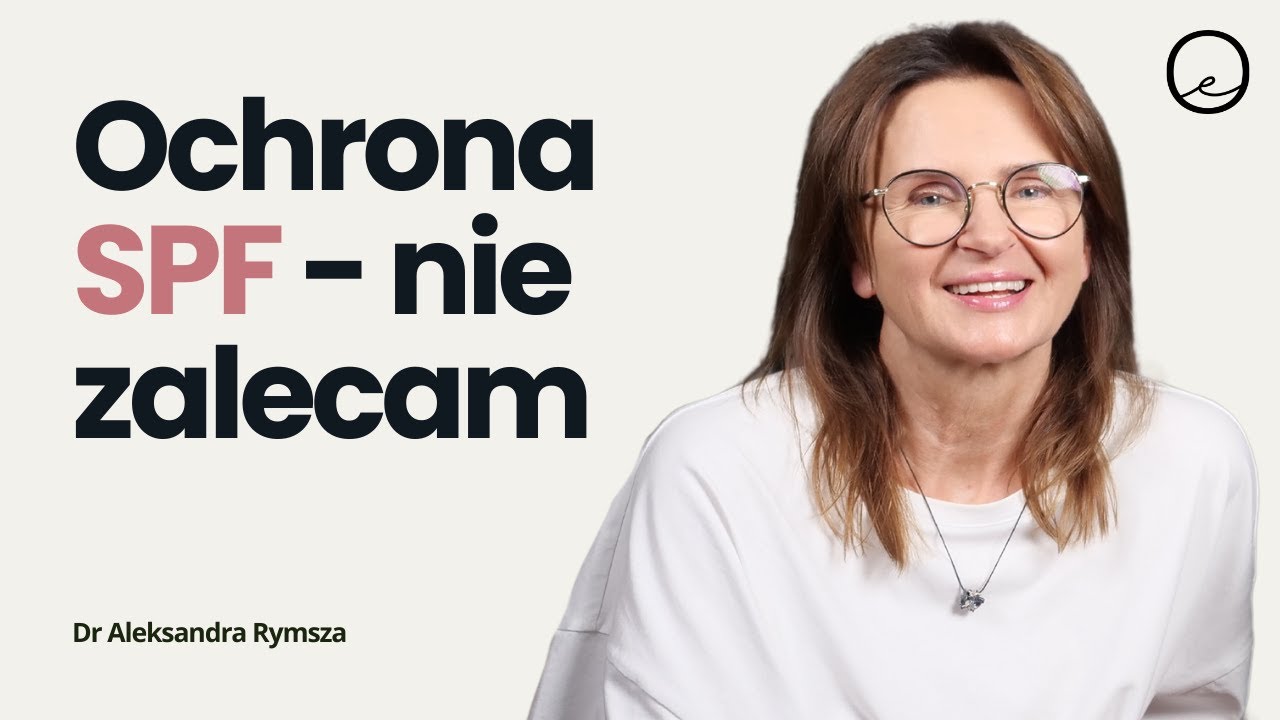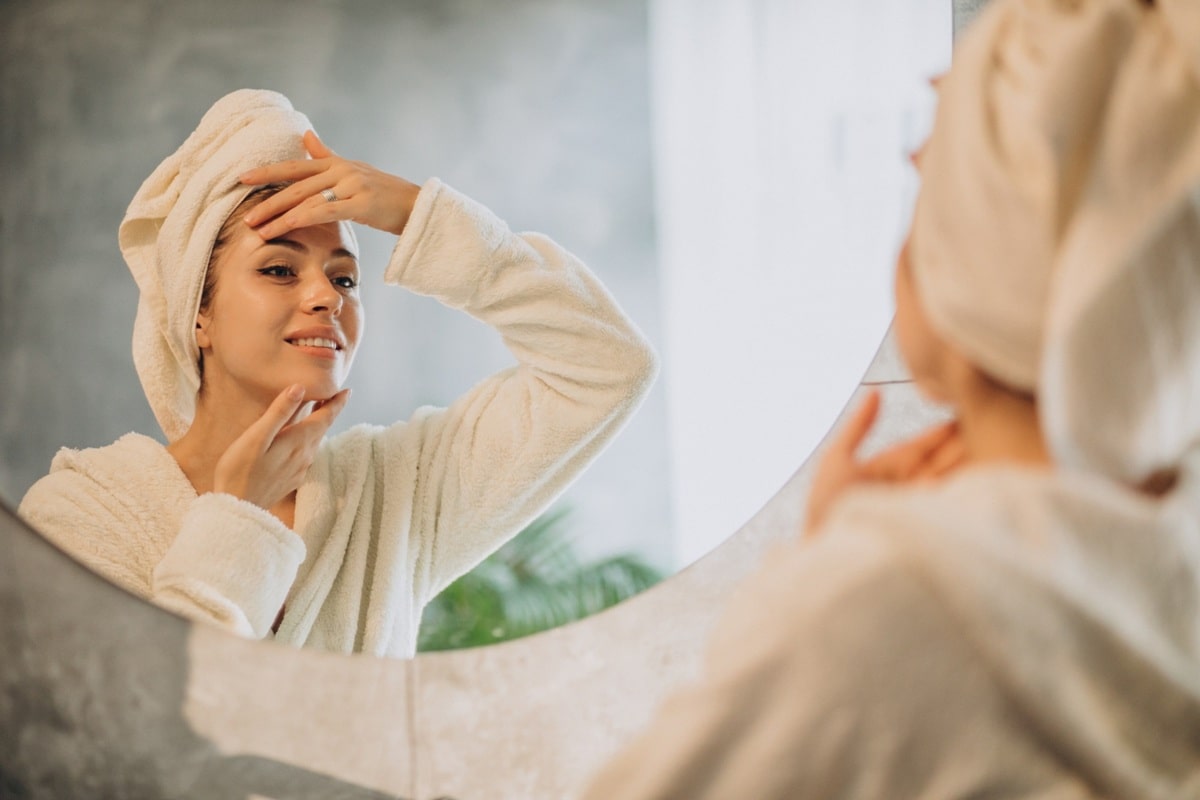Do you know how to properly use sunscreen to protect your skin from photoaging?

UV radiation is responsible for up to 80% of the signs of facial skin aging. But protection from the sun is only one element of anti-aging prevention. The basis of daily care should be cosmetics containing antioxidant ingredients that neutralize free radicals responsible for collagen degradation, loss of firmness and the formation of discoloration. But, in situations of increased sun exposure, it is worth reaching for additional sunscreen creams. In order to effectively protect the skin from wrinkles and post-sun discoloration, it is important not only to have a high SPF value, but also to apply it correctly and regularly.
What is photoaging and how does it affect the skin?
Photoaging is the process of premature aging of the skin caused by exposure to ultraviolet (UV) radiation. It is the sun, not the passage of time, that is responsible for most of the visible signs of skin aging. It is estimated that up to 80% of age-related changes - including wrinkles, discoloration or loss of firmness - are due to UV radiation¹. There are two main types of ultraviolet radiation - UVA and UVB.
- UVA rays account for about 95% of the total UV radiation reaching the earth's surface. They penetrate deep into the dermis, where they damage collagen and elastin fibers, leading to loss of firmness, wrinkles and sagging skin. Their effects are long-term, cumulative and difficult to notice immediately.
- UVB radiation has a more superficial effect, and is responsible for tanning and sunburn. It damages the DNA of epidermal cells, which can also contribute to accelerated aging, as well as skin cancer.
Although the effects of UV rays are not immediate, they gradually accumulate over time. Inadequate or too infrequent sun protection makes the skin lose firmness faster, become less elastic and more prone to wrinkles and discoloration.
Symptoms of photoaging
Photoaging manifests itself as a series of changes in the texture and appearance of the skin, which become more prominent over time. Among the most common are:
- Wrinkles and furrows - especially around the eyes, mouth and forehead. They have a characteristic deeper course and appear earlier than in sun-protected individuals;
- Hyperpigmentation - irregular pigmentation spots, so-called sun spots (lentigo), resulting from UV-induced melanocyte disorders;
- loss of elasticity and firmness - sagging skin, sagging of the facial oval, especially visible on the cheeks and neck;
- rough, dry skin texture - the skin becomes less smooth, with a tendency to thicken and peel;
- dilated blood vessels - so-called telangiectasias, often visible on the cheeks and nose,
- Dull, earthy skin tone - the result of microcirculation disorders and free radicals.
These changes appear gradually, usually after many years of sun exposure without proper protection. Importantly, they are not always immediately apparent - so daily photoprotection is fundamental, even if the skin appears to be in good shape at first glance.
Why is daily protection important?
The basis is to avoid sun exposure. At the same time, daily sun protection is the simplest and also the most effective way of anti-aging prevention.
Antioxidants are the first line of defense against photoaging. Ingredients such as vitamin C, vitamin E, ferulic acid, glutathione and resveratrol act as a molecular shield - neutralizing free radicals and promoting skin regeneration. Used regularly, they strengthen the skin's protective barrier, improve skin tone and protect against the effects of oxidative stress.
UV filters (SPF) are worth reaching for when you're planning an extended stay in the sun, outdoor activity or vacation. Filters complement the action of antioxidants and help protect the skin from sunburn, discoloration and photodamage.
SPF a PA - full protection
When choosing a cosmetic sunscreen, it is worth paying attention not only to the SPF(Sun Protection Factor), but also to the labels indicating UVA protection. SPF refers only to protection against UVB, the radiation that causes erythema and sunburn. It says nothing about protection against UVA rays, which are the main culprit of photoaging.
Indicators of UVA protection include:
- PA+ to PA++++ - a system originating in Asia, based on the designation of the level of UVA protection. The more pluses, the higher the protection,
- PPD (Persistent Pigment Darkening) - a designation used mainly in Europe to indicate how effectively a product prevents UVA-induced pigmentation,
- UVA symbol in a circle - indicates that the product meets European standards for broad-spectrum UVA protection (at least 1/3 of the declared SPF is for UVA protection).
For full skin protection, choose broad-spectrum filters that protect against both UVB and UVA. It is good if they additionally contain substances with antioxidant properties, such as vitamin C.
How to properly apply sunscreen?
What matters is the amount, the method of application, the areas covered and the timing. The recommended amount of sunscreen is about 2 mg for every cm² of skin. For the face alone (including the ears and neck), this means about 1-1.25 ml, a volume equivalent to the full length of two fingers or one flat teaspoon. Too thin a layer can lower the claimed protection from SPF 50 to as low as SPF 15-20.
Sunscreen should be applied to all exposed parts of the body, not just the face. In daily care, it is worth remembering:
- neck and neckline,
- Ears (especially the upper edges of the auricle),
- The backs of the hands,
- baldness and hairline,
- Around the mouth and eyelids (if the product is safe for the eyes).
In order for the sunscreen to start working with full effectiveness, it should be applied 15-20 minutes before going outside. This time allows the active ingredients to stabilize on the surface of the skin and form a protective layer.
Reach out for more tips and read the article: How to take care of your skin in summer? A comprehensive guide to protection and care
A single application of sunscreen in the morning is not enough to last all day - even if the product has a high SPF. Over the course of the day, the protective layer becomes abraded, broken down by perspiration, touching the face, wearing a mask or coming into contact with clothing. To maintain the claimed level of protection, application should be repeated every 2-3 hours, especially after heavy sweating, bathing in water (even if the product is waterproof).
What should be the order of care? When to apply sunscreen and when to apply makeup?
Sunscreen should be the last step in your skincare regimen, applied after an antioxidant serum and moisturizer, and before makeup. This ensures that SPF forms a uniform protective layer that is not compromised by subsequent skin care products. For those who apply makeup, it is useful to know how to reapply the filter during the day without washing off color cosmetics. This can be done in several ways:
- Using mists or sprays with SPF that do not disturb the foundation,
- through mineral powders with filters that both mattify and protect the skin,
- using gentle creams in a stick or compact pillow (known as cushions) with a filter, which allow precise application of the product over makeup.
These types of solutions make it possible to maintain sun protection throughout the day, even in demanding conditions, such as when traveling, working outdoors or during a busy day in the city.
What sunscreen will be appropriate?
Since there are many products on the market with different formulations, textures and properties, it is advisable to be guided not only by the SPF value, but also by the type of filter and individual skin needs.
There are two main types of sunscreens used in sun cosmetics.
- Chemical (organic) filters - absorb UV radiation and convert it into harmless heat. They are usually light, transparent and absorb well, so they are often recommended for use under makeup.
- Mineral (physical) filters - form a barrier on the skin that reflects UV rays like a mirror. Their ingredients are usually zinc oxide and titanium dioxide. They are recommended for people with sensitive skin, prone to allergies or after aesthetic medicine procedures.
The choice between them should depend on the skin type, lifestyle and personal preferences of the user. In addition to the type of filter and SPF value, let's also pay attention to the additional features of the product, which can make a big difference with frequent use.
- Water-resistant filters - especially recommended for those who are active, do outdoor sports or are in humid environments. Such a filter remains effective even after swimming or sweating heavily, although it still requires reapplication after the skin dries.
- Formulas for sensitive and problematic skin - it is worth choosing fragrance-free products without alcohol, parabens and comedogenic substances. For irritated skin or after treatments, mineral filters with mild dermatological formulas are recommended.
- Tinting creams with SPF - combine protective and skin-equalizing properties, making them a frequent substitute for foundation or BB cream.
Recommended SPF and PPD values
In sun protection, it is recommended to use creams with an SPF value of at least 30, and optimally - SPF 50. This factor indicates the degree of protection against UVB radiation, which is responsible for sunburn and erythema.
The most common mistakes when using sunscreens
When fighting premature skin photoaging, even despite the best intentions, many people make mistakes that significantly reduce the effectiveness of sun protection. As a result, the skin continues to be exposed to micro-damage, which over time leads to wrinkles, discoloration and loss of firmness.
Too little product
Applying too thin a layer of cream drastically reduces the level of protection. For example, a layer of SPF 50 applied at 1/4 of the recommended amount can in practice only provide protection at the SPF level of 12-202. To achieve the claimed SPF level, you need to apply about 1-1.25 ml on the face alone, which is equivalent to the volume of two fingers of cream.
Skipping sensitive areas
The ears, neck, backs of the hands, hairline, eyelids or around the mouth are areas often overlooked during application. Meanwhile, they are equally exposed to UV rays, and at the same time susceptible to photoaging and the development of pigmented or cancerous lesions.
Application just before going out
Sunscreen requires 15-20 minutes to set on the skin and provide full protection. Applying it just before leaving the house means that for several minutes the skin remains properly unprotected.
No reapplications during the day
No cream, even with the highest SPF, works all day without reapplication. Sun protection fades due to perspiration, contact with clothes, protective mask or touching the face. Therefore, reapplication every 2-3 hours (or after bathing/sweating) is essential to maintain effectiveness.
Use of an expired product
UV filters lose stability over time, especially if the product has been stored in heat or exposed to light. Using sunscreen after the expiration date means incomplete or no protection, despite proper application. It is a good idea to check the expiration date and use the opened product within a maximum of 6-12 months.
Facts and myths about sunscreens
Many myths have grown up around the use of sunscreen.
Myth 1. People with dark skin don't need sunscreen
This is not true. Skin with a higher phototype does indeed contain more melanin, which provides a natural protective barrier against UV radiation. However, this protection is not complete. UVA radiation penetrates the deep layers of the skin regardless of complexion color, contributing to photoaging and cellular damage. Therefore, all skin - both light and dark - should be protected in situations of increased sun exposure. Sunscreens are only a support, not a guarantee of full protection. It is crucial to use the sun sensibly and avoid overexposure.
Myth 2. Use of sunscreens blocks vitamin D synthesis
In theory, yes, because UVB radiation is needed to synthesize vitamin D in the skin, and sunscreens are designed to block this radiation. In practice, not quite. Studies show that even with regular use of sunscreens, vitamin D production is not completely blocked, This is due to the fact that the filters are not applied perfectly and in sufficient quantity (that is, they do not form a 100% barrier), so UVB radiation still reaches the skin - especially with daily, short exposures.
Myth 3. SPF 50 filter "clogs" pores and causes imperfections
Modern sunscreen formulas are lightweight, oil-free and non-comedogenic, which means they do not clog pores. Special mattifying and sebum-regulating formulas are available for problematic skin. Acne problems after SPF are most often due to a mismatch between the formula and the skin type, rather than the use of sunscreen itself.
Myth 4. Cosmetics with SPF are enough as the only protection from the sun
This is not true. Even the best cream with a high SPF does not provide full protection against the harmful effects of UV radiation. The basis of protection is to sensibly limit sun exposure, especially during peak sunlight hours. Sunscreen preparations should be considered as a supplement, not the only source of protection.
Conscious sun use + SPF = effective skin protection strategy.
Effective treatments for post-sun discoloration
In the fight against post-sun discoloration, take advantage of the treatments offered by Dr Szczyt Clinic.
Perfect Peel
This is a medium-depth chemical peel that combines the action of ingredients such as glutathione, kojic acid, TCA, salicylic acid, phenol, vitamin C and retinoic acid. It effectively reduces post-sun discoloration, melasma and improves skin tone and texture. Perfect Peel is suitable for a variety of skin types and can be used on the face, neck, décolleté and hands.
I PEEL Lightening Lift Forte
This advanced chemical peel contains lactic acid, vitamin C and hyaluronic acid. It is designed for those with post-sun discoloration, melasma and uneven skin tone. The I Peel works at different depths of the skin, allowing for customized therapy.
The Max Lift (I Peel Ormedic Lift).
This is a natural enzyme scrub based on papaya, pineapple and pumpkin extracts, enriched with hyaluronic acid and green tea. It gently exfoliates, brightens blemishes and intensively moisturizes the skin. The Max Lift is suitable for sensitive skin, dry skin and for pregnant and nursing women.
Photofabulous
Treatment with the Stellar M22 platform, which is excellent for eliminating hyperpigmentation, erythema, dilated vessels and triggers the formation of new collagen fibers
UltraPulse® Alpha
An advanced fractional CO₂ laser that precisely removes damaged skin tissue while stimulating regenerative processes. It effectively reduces post-sun discoloration, scars and improves skin tone and texture. The treatment is tailored to the individual needs of the patient, and the results are visible after the first session.
Choosing the right treatment should be preceded by a consultation with a specialist, who will assess the condition of the skin and select the most effective method of therapy. Regular use of sun protection and proper skin care after treatments are key to maintaining and enhancing the effects of the therapy.
Frequently asked questions, how to use sunscreen? (FAQ)
Do I need to use sunscreen every day, even in winter?
No, sunscreen is not a mandatory part of daily skin care. It should be used as a form of additional protection in situations of increased exposure to the sun - for example, when walking in full sun, playing outdoor sports or during the summer. It is worth remembering, however, that sunscreen does not provide full protection - its effectiveness depends, among other things, on the method of application, amount, skin phototype or intensity of radiation. Preparations with a sunscreen mainly protect against sunburn, while their role in the prevention of cancer has not been unequivocally confirmed scientifically. The best protection always remains sensibly limiting exposure and supporting the skin with antioxidant ingredients.
What is the difference between a chemical filter and a mineral filter?
Chemical (organic) filters absorb UV rays and turn them into harmless heat - they are usually lighter and transparent on the skin. Mineral filters (physical, e.g. zinc oxide, titanium dioxide) reflect and scatter UV rays like a mirror - they are gentler on sensitive skin, but can leave a white layer. Both types are effective, and the choice depends on skin preference and tolerance.
Will makeup products with SPF replace sunscreen?
Primer or BB cream with SPF can help, but we usually apply too little to achieve the claimed level of protection. For full protection, it's better to treat makeup with SPF as a supplement and always use a full-fledged sunscreen underneath. If you use makeup with SPF, be sure to also reapply (e.g. with SPF powder) during the day.
Sources
- Sunlight and aging, EWG Sun Safety. [https://www.ewg.org/sunsafety/tips-sunlight-and-aging.php#:~:text=Sunlight%20and%20aging], accessed May 29, 2025.
- Platinum Skincare. SPF application amounts: are you using enough? [https://www.platinumskincare.com], accessed May 29, 2025.
- Norval M. et al. The effect of sunscreen on vitamin D. Br J Dermatol. 2010.













